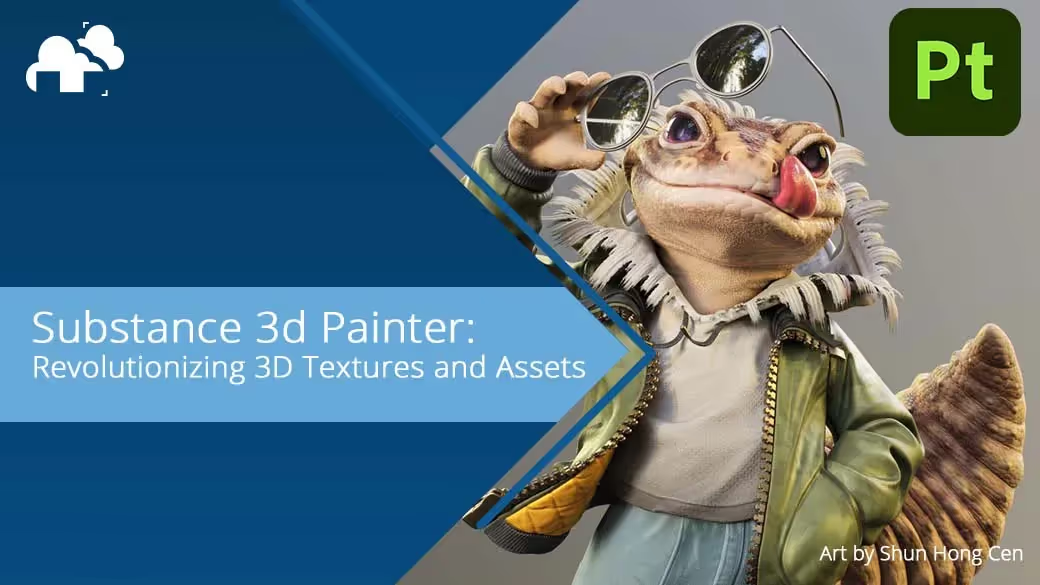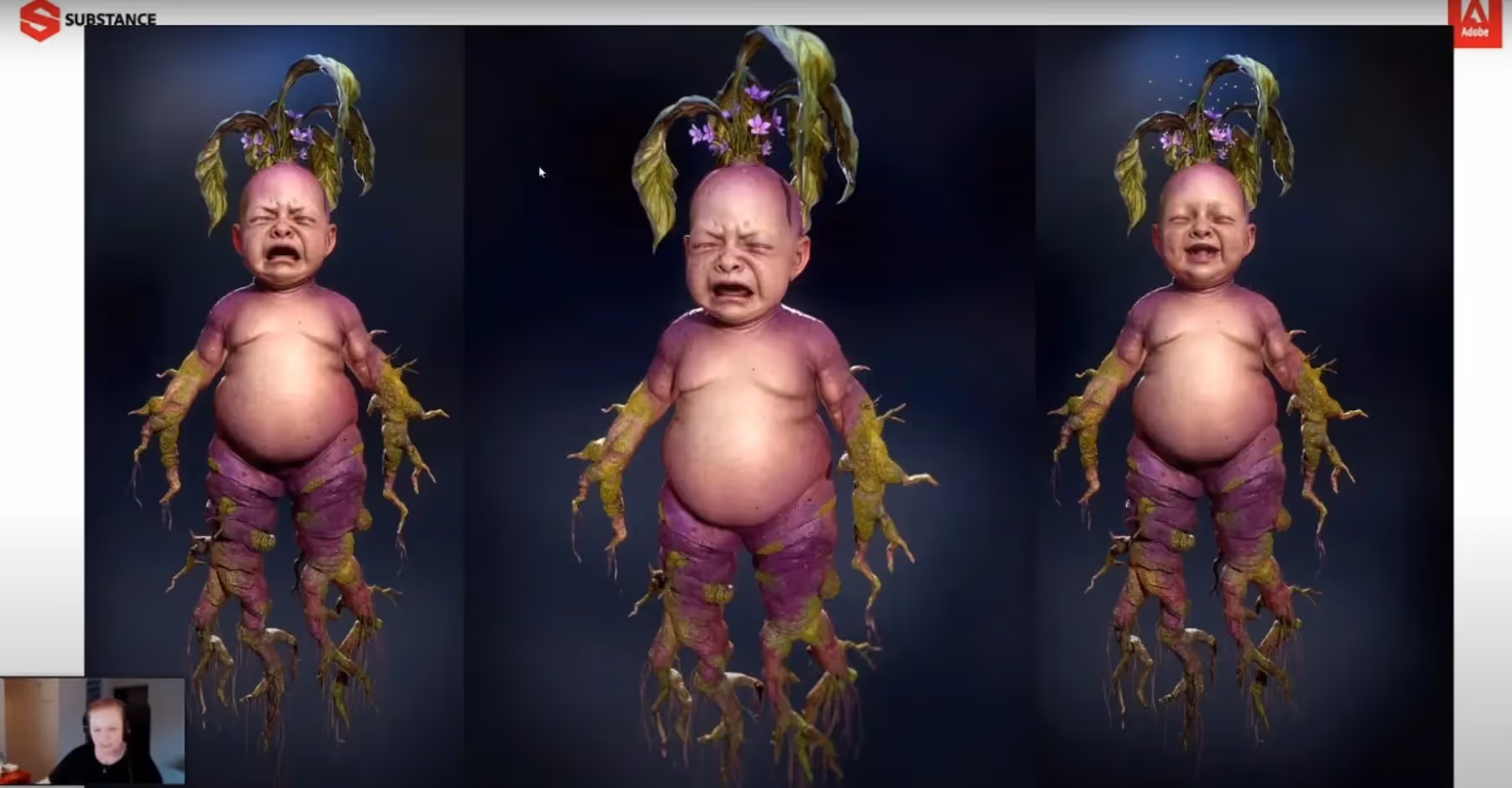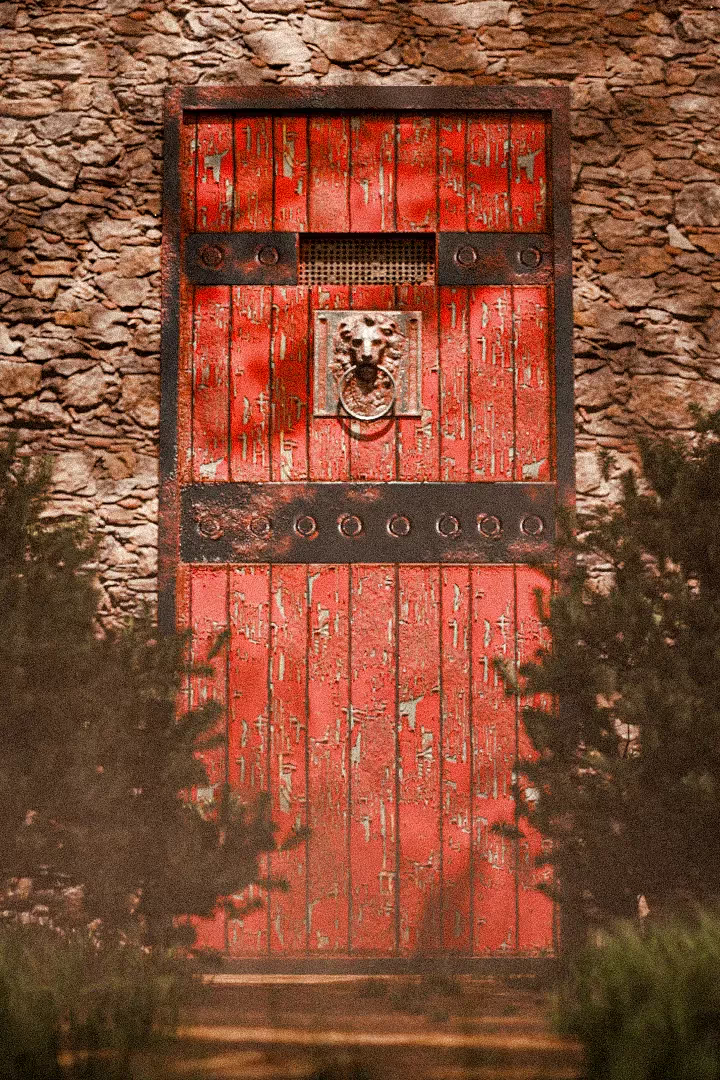

Substance 3D Painter stands out as a standalone texturing app, redefining the way 3D professionals and enthusiasts approach texture creation. As part of the Adobe Substance 3D Collection, this powerful tool enables users to generate detailed textures and materials with incredible precision and flexibility. Substance 3d Painter allows for the creation of Mesh Maps from 3D models and the baking of high-poly details onto low-poly meshes. This capability ensures that even the most intricate designs maintain their quality across different levels of detail.
One of the standout features of Substance 3d Painter is its ability to use generated Mesh Maps to drive texturing effects. This means that textures can respond dynamically to the underlying geometry, providing a level of realism that is hard to achieve with traditional texturing methods. The app supports various map sizes, catering to different project requirements, and offers real-time previews of textures and materials, showing how they respond to light and other environmental factors.
Substance 3d Painter also supports industry workflows such as UDIM mapping, a method that allows for detailed texturing of large models without losing resolution. This makes it a go-to texturing app for 3D professionals working on high-end projects in fields like video game development, visual effects, and animation.
Substance 3d Painter's integration with Adobe Inc. and the Adobe Creative Cloud ecosystem is seamless, enhancing its utility and accessibility. The app works harmoniously with Adobe Photoshop, enabling artists to leverage Photoshop’s extensive toolkit for additional texture editing. Integration with Substance Designer allows for the creation of custom materials and more complex textures, which can then be applied in Substance 3d Painter. Substance Sampler, another tool in the Substance 3D Collection, further enriches this ecosystem by enabling the capture and creation of real-world materials from photographs, which can be imported into Substance 3d Painter for further refinement.
Substance 3D Painter boasts an extensive array of painting tools and techniques, empowering artists to bring their creations to life with precision and creativity. The use of brushes in Substance 3d Painter is intuitive, offering a wide range of customizable options to suit any artistic style. Fill Layers and Materials, including custom, preset, and smart materials, allow for efficient and flexible texture application. These materials can be applied and adjusted quickly, streamlining the workflow and ensuring consistency across assets.
Masks are another powerful feature in Substance 3d Painter. Standard masks enable selective texture application, while smart masks use underlying geometry and mesh maps to dynamically adjust texture details. This can be particularly useful for adding wear and tear effects, such as rust or peeling paint, which require a realistic response to the model’s surface characteristics.
Channel-specific layer blending modes, such as Base Color, Height, Normal, and Roughness, give artists granular control over how textures interact. This allows for complex layering and texturing techniques that can significantly enhance the visual quality of 3D models.
Substance 3d Painter excels in texture mapping and rendering, offering various projection modes such as UV and Tri-Planar. These modes ensure that textures are applied accurately and seamlessly across different surfaces. Real-time feedback in the viewport, coupled with switchable HDR maps, allows artists to see how their textures will look under different lighting conditions. This feature is invaluable for achieving the desired aesthetic and ensuring that the final render matches the artist’s vision.

Substance 3D Painter has become an indispensable tool in the development of AAA video games. The technical requirements of video game textures are stringent, demanding high resolution and detail without compromising performance. Substance 3d Painter addresses these needs through its support for UDIMs, which allow for the creation of highly detailed textures on large models. The ability to bake normal and height maps from high-poly meshes ensures that textures retain their intricacy even on lower-poly models, which is crucial for optimizing game performance.
Substance 3d Painter’s flexibility in quickly modifying textures and map sizes makes it ideal for the iterative process of game development. Artists can easily adjust textures to meet changing design requirements, ensuring that assets look consistent and polished throughout the development cycle.
In visual effects (VFX) and animation, Substance 3d Painter’s ability to add effects to digital props using generators and smart materials simplifies the creation of complex, dynamic textures. For instance, artists can simulate peeling paint, rust, and other wear effects that respond to the underlying geometry and environmental factors.
Custom ID Passes in Substance 3d Painter allow for precise control over different parts of a model, enabling targeted texturing that enhances the overall realism and visual impact. This level of detail is crucial for high-quality VFX and animation, where every pixel contributes to the believability of the scene.
Substance 3d Painter uses Physically Based Rendering (PBR) to ensure that materials behave realistically under various lighting conditions. PBR techniques simulate the physical properties of materials, such as reflectivity and texture, to create more lifelike and visually consistent results. This approach is particularly beneficial for assets that need to look convincing across different environments and lighting setups.
Proper color management in Substance 3d Painter ensures that textures look consistent across different devices and platforms. The app provides tools for managing color profiles and calibrating displays, helping artists maintain accurate color representation from creation to final output.
Substance 3d Painter supports a wide range of map formats, including standard formats like PNG and JPEG, as well as specialized formats for different rendering engines. This flexibility allows artists to export textures in the format that best suits their pipeline, whether they are working on a game, film, or virtual reality project.
For beginners and seasoned professionals alike, learning Substance 3d Painter is made easier with a wealth of tutorials and resources available on YouTube. These tutorials cover everything from basic techniques to advanced workflows, providing valuable insights and practical tips.
The Substance 3D community is a rich source of assets and inspiration. Artists can access a variety of free and paid assets through platforms like Substance Share and Substance Source. These assets, which include materials, brushes, and models, can be used to jumpstart projects and enhance productivity. Licensing options for these assets ensure that they can be used legally in commercial and personal projects.

The Demonstration below is meant to give a quick glimpse of a basic workflow within Substance Painter. The mesh in the project is baked from a higher poly version that has more details around the lion head and horizontal extrusions. The result is the lower poly mesh containing the detail of the high poly version in the form of a normal map, bypassing the need to create more topology to capture that detail.
With the mesh maps generated, the normal map is reintroduced to the mesh via a Fill layer, which contains all the texture channels of a shader which can be individually activated or deactivated depending on your needs. An anchor point is created and later used within the properties of a Smart Mask applied to a rust material in a layer above, allowing the mask to be driven by the baked normal map. This enables the horizontal beams and the lion head to more realistically interact with the rust.

Masks are used again to isolate materials to specific parts of the model as layers. The material parameters can be adjusted at any point and will reflect instantly in the viewport. Masks can contain multiple types- from smart masks to paintable masks, which make it possible to refine a procedural mask with hand painting.
Additionally, even more detail can be added to a mesh using Materials or textures of any type, which can be dragged directly unto the mesh and switched on the fly. Thanks to the myriad approaches to texturing available in Substance Painter, simple meshes can be iterated on for conceptualization as well as for actual production.

The future of Substance 3d Painter looks promising, with ongoing developments in texture mapping and 3D asset creation. Advances in AI and machine learning are likely to play a significant role, enabling more intuitive and efficient texturing processes.
Currently in BETA, generative AI textures in Substance Sampler leverage machine learning to analyze photographic input and generate high-quality textures, significantly reducing the time and effort required by 3D artists.
This innovative approach allows for the rapid creation of complex materials that would traditionally necessitate extensive manual work. Looking ahead, it is reasonable to infer that Adobe might extend these AI capabilities to Substance Painter, integrating more sophisticated AI-driven tools for texture refinement and material creation.
Future updates could include real-time AI feedback to suggest texture adjustments, intelligent pattern recognition to automate repetitive tasks, and enhanced procedural generation techniques that respond to artistic input with increased precision and customization.
In summary, Substance 3D Painter has revolutionized the field of 3D computer graphics, providing artists with powerful tools to create detailed and realistic textures. Its seamless integration with Adobe Creative Cloud and support for industry-standard workflows make it the reference texturing app for 3D professionals and enthusiasts.